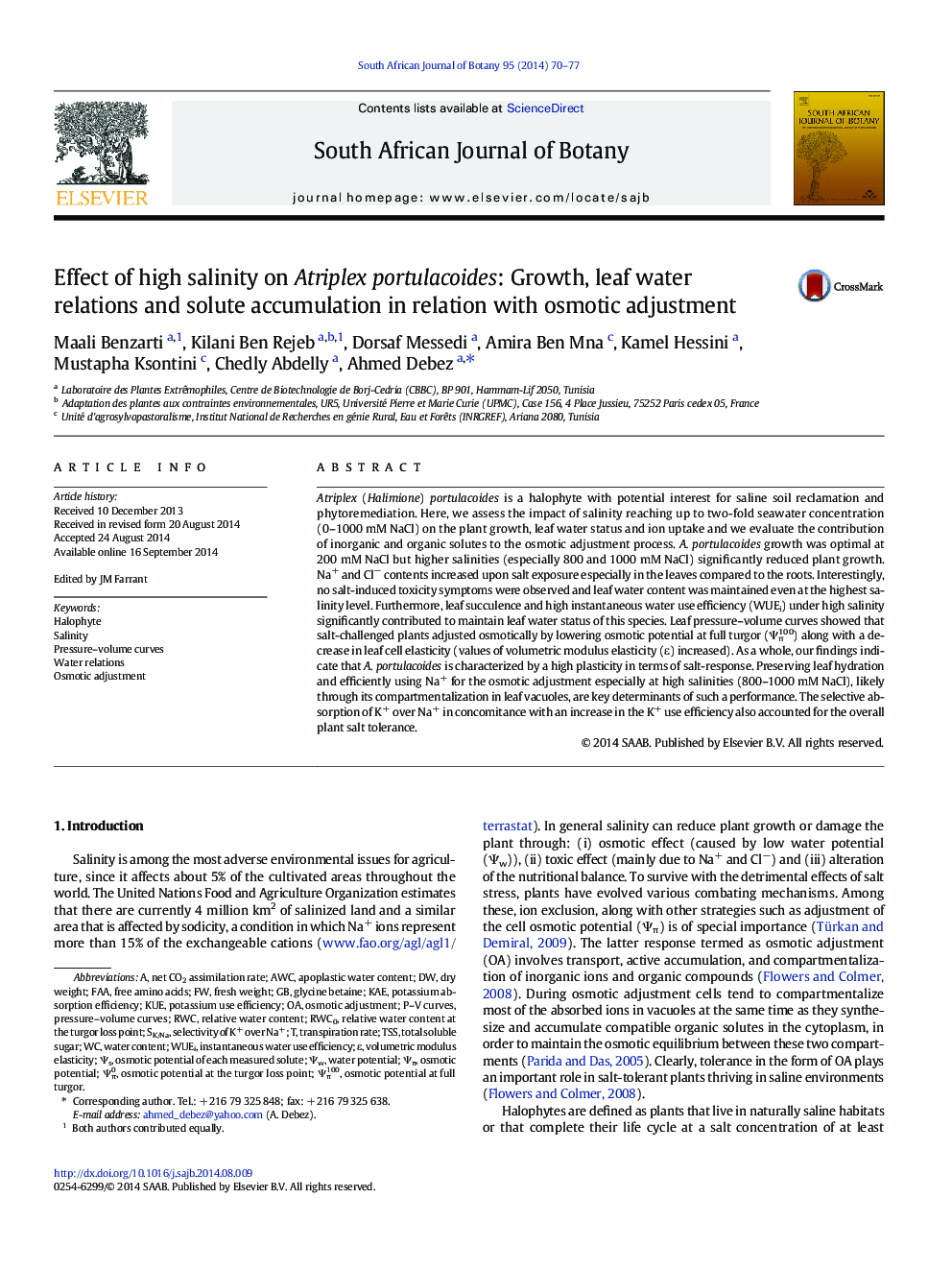| Article ID | Journal | Published Year | Pages | File Type |
|---|---|---|---|---|
| 4520638 | South African Journal of Botany | 2014 | 8 Pages |
•Atriplex portulacoides can survive under up to twofold sea water NaCl-salinity.•Neither dehydration nor leaf injury symptoms occurred in salt-treated plants.•Succulence contributes to deal with the high internal ion concentrations.•This species responded to salt stress with an active osmotic adjustment.•The quantitative contribution of Na+ and Cl− was higher in the osmotic adjustment.
Atriplex (Halimione) portulacoides is a halophyte with potential interest for saline soil reclamation and phytoremediation. Here, we assess the impact of salinity reaching up to two-fold seawater concentration (0–1000 mM NaCl) on the plant growth, leaf water status and ion uptake and we evaluate the contribution of inorganic and organic solutes to the osmotic adjustment process. A. portulacoides growth was optimal at 200 mM NaCl but higher salinities (especially 800 and 1000 mM NaCl) significantly reduced plant growth. Na+ and Cl− contents increased upon salt exposure especially in the leaves compared to the roots. Interestingly, no salt-induced toxicity symptoms were observed and leaf water content was maintained even at the highest salinity level. Furthermore, leaf succulence and high instantaneous water use efficiency (WUEi) under high salinity significantly contributed to maintain leaf water status of this species. Leaf pressure–volume curves showed that salt-challenged plants adjusted osmotically by lowering osmotic potential at full turgor (Ψπ100) along with a decrease in leaf cell elasticity (values of volumetric modulus elasticity (ε) increased). As a whole, our findings indicate that A. portulacoides is characterized by a high plasticity in terms of salt-response. Preserving leaf hydration and efficiently using Na+ for the osmotic adjustment especially at high salinities (800–1000 mM NaCl), likely through its compartmentalization in leaf vacuoles, are key determinants of such a performance. The selective absorption of K+ over Na+ in concomitance with an increase in the K+ use efficiency also accounted for the overall plant salt tolerance.
